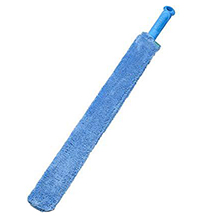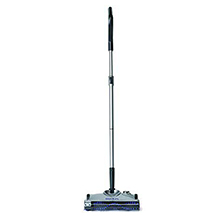Mop purchasing advice: how to choose the right product
- What you need to know
- Mops come in lots of different forms: with and without buckets, wringing mechanisms, and even with a spraying function.
- The combination of a spin mechanism, intuitive handling and a large mop head has proven to be the most efficient for cleaning floors.
- Keep the varying demands of different kinds of flooring in mind when mopping. Tiles, laminate, and parquet each require a particular way of cleaning.
Comfortable floor cleaning: use a mop
Be it the pawprints of your cat or dog, your children’s dirty boots or a spilt cup, more cleaning is always around the corner. That’s why you should make it as quick and comfortable as possible. A mop is a practical household aid that allows swift and easy cleaning of floor tiles and laminate. They usually consist of a head covered with a pad and a long handle. There are also electrical steam cleaner mops for more stubborn dirt.
No matter what kind of mop you prefer, they’re all way more efficient than scrubbing the floor by hand. In addition, they’re more environmentally friendly than disposable wipes which produce a lot of waste. Most pads are machine washable and don’t require constant replacement which saves you some money too.
What types of floor mops are there?
Conventional mops come in two versions: flat mops with a rectangular cotton or microfiber cloth and round mops with long microfiber or cotton strings. The latter is better for coarse dirt or hair. Which version is best for you depends on the type of floor you want to clean with it.
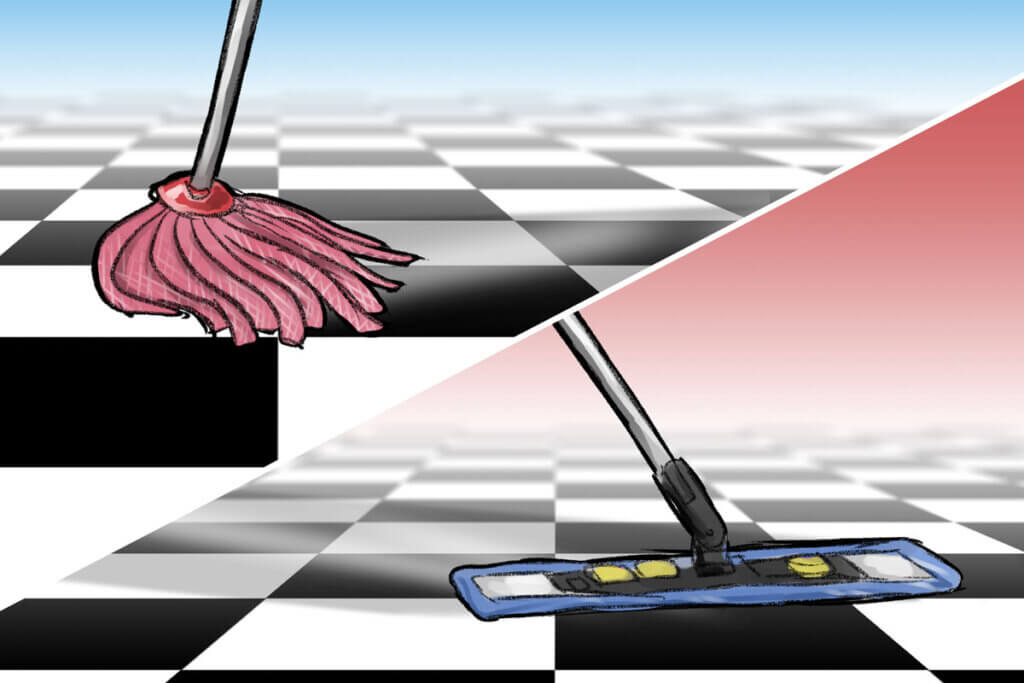
String mops
Unlike flat mops, string mops have a round head with a bundle of strings or fabric strips attached. They pick up hair and other dirt and can be rinsed and wrung in a bucket. Some sets are equipped with a mechanism that allows you to rinse the mop by squeezing it in kind of a strainer or by quickly rotating it. Many mop heads are detachable so can wash them in your washing machine.
The advantage of these models is that you can easily reach every corner of your home and comfortably bypass any furniture or obstacle. However, due to the smaller radius, they’re not ideal for large surfaces. You can get covers with strings for some flat mop models too.
Advantages
- Effective dirt collection in the strings
- Heads are usually machine washable
- Comfortable wringing and spinning with some systems
Disadvantages
- Not great for large areas
Flat mops
Flat mops are characterized by their long, flat mop head. There are available in different sizes and can be chosen in accordance with the size of the surface you want to clean. Typically, they have a replaceable cover that can be washed at 140 °F (60 °C). This is attached to the mop head via clamps or fasteners. The alternative is disposable moist wipes that are thrown away after wiping. However, they are not environmentally friendly and are often not compatible with the previously mentioned systems.
The advantage of the flat mop lies in its optimized design for cleaning large areas, which it owes to its large head. However, the payoff is that they are harder to maneuver around furniture in corners or non-rectangular areas.
Advantages
- Time-saving cleaning of larger areas
- Usually machine washable
Disadvantages
- Harder to clean around furniture or in narrow corners
Buying tips
The range of floor mops is diverse. To find the right model, you should pay attention to the following: handle length, build material, width of the mop head, cleaning performance, cover, extras such as a bucket with a special function or a spray function, and the overall weight.
Size matters
Mops are popular because they simplify cleaning floors and are easy on the back. To avoid bending over, the handle needs to be long enough. Some models have a telescopic handle, so you can adjust them to your height. This way, there are no excuses and everyone in your household can help with cleaning.
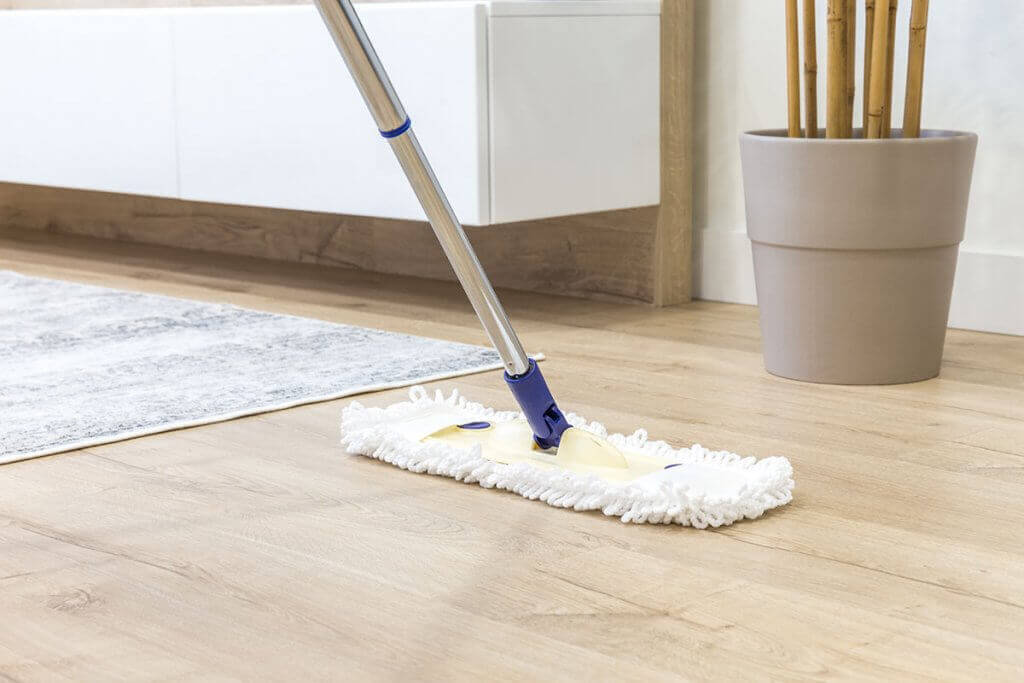
What’s the best material for a mop head?
Mop heads are often fiber blends of cotton and microfiber. Such mixed materials are suitable for most surfaces. The use of mop heads with microfiber content is also not a problem with varnished parquet. The situation is different with oiled wooden floors. They are susceptible to scratches and small cuts caused by worn microfibers. On these surfaces, you should use pure cotton covers and not too much water.
Width of the mop head
The width of the mop head determines how many passes you have to make over the floor to make everything shine. The following applies: The mop head of a flat mop is always wider than that of a fringe mop. But there are also differences between the individual types. The width of the mop head can vary greatly, especially with flat mops which can for example measure between 10 to 18 inches (25-45cm).
Cleaning performance
The cleaning performance of the mop is, of course, influenced by its design. The width of the mop head is extremely important. Almost more important, however, is the material of the cover. Microfiber, for example, absorbs much more dirt than a cover made of pure cotton. Some floors can even be cleaned from time to time without any cleaning agent at all, i.e. only with a microfiber cover. This applies, for example, to cleaning house dust. The higher the quality of the cover, the more water it absorbs when immersed in the bucket and the slower it will release it during mopping. This way, puddles won’t form and you won’t be constantly busy mopping up the water instead of cleaning the floor. Generally, the best covers for these two factors are made from a blend of cotton and microfiber.
Advantage of washable covers
If the mop is designed for the use of reusable covers, this has several advantages: At the forefront, of course, are the points of sustainability and environmental protection. A washable cover is cleaned in the washing machine and can then be reused. This reduces waste and saves money.
Naturally, you can also use disposable cloths. These are usually already damp, so you don’t need to fill a bucket with water. This makes disposable covers ideal for quick, in-between cleanings. However, they quickly become unsuitable for large floor areas, as you’ll need a lot of them for one cleaning cycle. In addition, the systems are usually not compatible with each other, so that the disposable cloths can’t be attached to other mops.
Buckets with a wringing or spinning function
When using a mop, it makes sense to use a bucket. This way you can clean the cover without having to run to the sink every time. The bucket contains the cleaning water and some detergent. Some mop sets also come with a mechanism for wringing out or spinning the cover. While some buckets have a mechanical press that pushes excess water out of the cover, other models have a small pedal on the side that triggers the spinning of the mop head, pushing excess water out of the cover by centrifugal force. No matter which of the two functions you prefer, your hands will stay dry. You can also determine relatively easily how damp the mop cover should be. This is a crucial advantage, especially for floor coverings that are sensitive to moisture.
Spray mops
Floor mops with a sprayer are an alternative to mops with a bucket. They have a water container attached to their handle that releases water by the push of a button. After that it’s mopping business as usual.
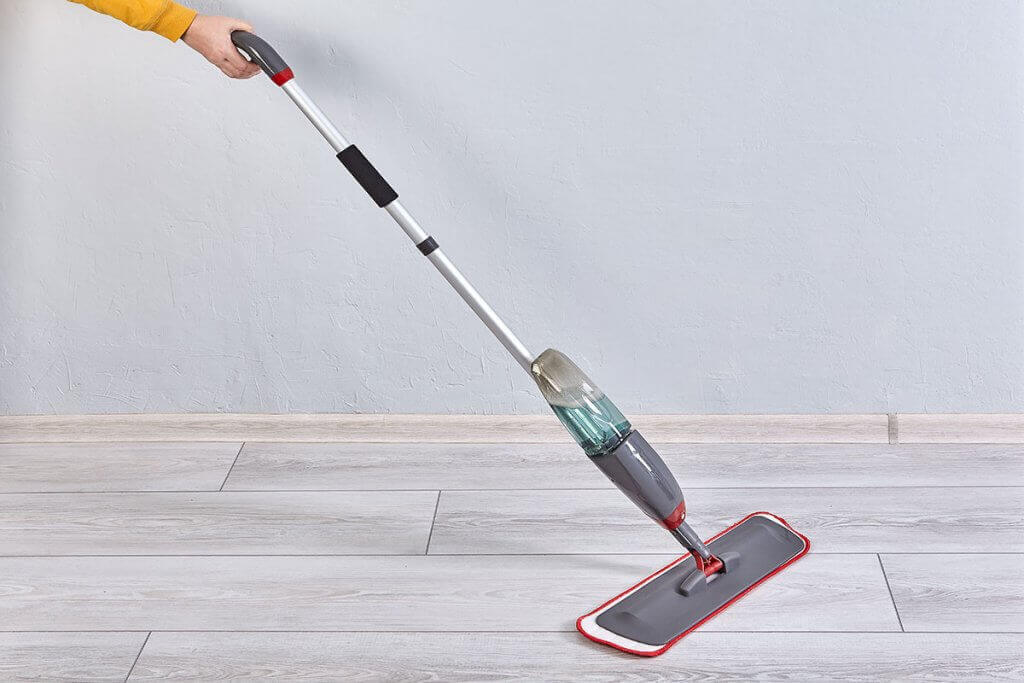
With these mops you use comparatively little water. The moisture can also be set very precisely. This makes them particularly suitable for water-sensitive floor coverings. However, their cleaning performance is often significantly lower than that of mops with a bucket.
How much does a mop weigh?
Mops are used throughout your home. This means, you’ll probably have to carry your mop up and down the stairs from time to time. Depending on how often or how far you have to carry it, weight becomes a factor. As a rule, mops should weigh less than 2 pounds (1kg). And then there also is the bucket, including water and cleaning agent, and potentially a wringing mechanism. Some models weigh only about 1.5 pounds (750g). A comparison is worthwhile here, especially if you are looking for a lightweight but robust mop.
Tips and tricks for a clean floor
Different floor coverings such as tiles, laminate and parquet have different cleaning requirements. Therefore, it is important to know how to handle different types.
Thorough preparation: the basis of a clean floor
Not only dust and hair collect on the floor, but also other dirt, such as soil residues, abrasion of soles or paw prints. So, the first thing to do is to tidy up. Collect toys, shoes, and anything else that may still be on the floor. If possible, put chairs up high so you don’t have to fuss with moving them back and forth when mopping.
Next, first go over the floor with a vacuum cleaner. This will remove loose dirt and hair that would later get caught in the mop. Only then do the actual mopping. Be careful not to use too much water. Wooden floors and laminate in particular can’t tolerate much moisture. If your floor is too wet, simply wipe again with a dry cover; this will remove any remaining moisture.
The right cleaning agent
The choice of cleaning agents is almost as varied as the range of mops. All-purpose cleaners are the most common. After all, they promise a sweeping blow on various types of dirt and grease: they are good for cleaning floors in living rooms, kitchens, and bathrooms. If you don’t have an all-purpose cleaner in the house, or if you want to save money, you can take a look in your household cupboard. You can often find alternatives there.
Vinegar: This is a true all-rounder when it comes to cleaning. Simply dilute vinegar in water and then use it to mop smooth floors. Vinegar is so powerful that it even removes lime scale.
Dishwashing liquid: Everyone has dish soap at home. It dissolves stains similarly well to many floor cleaners, while being much less expensive.
Fabric softener: Wondering how your neighbor gets his laminate so shiny? Maybe he just adds some fabric softener to the mopping water.
Curd soap: This home remedy is the perfect choice for cleaning tiles. Curd soap can also get rid of stubborn stains or heavy encrustations. Soak them with a little soap and water. After that, you can easily remove them with a plastic spatula. After mopping, however, you should wipe again with clean water.
Alternatives to manual floor mops
If your floor is very dirty, you might want to think about buying a steam cleaner. It heats water and emits hot steam, which soaks and loosens the dirt without using any chemicals. When mopping after the steam treatment, you pick up the dirt and as a result you get a shiny, hygienic floor. A steam broom combines these two steps. You might also want to look at a vacuum mop combo machine. They let you save on preparing the floor with a vacuum cleaner: the device combines vacuuming and mopping in one step.
Image 1: © FinalCheck | Image 2: © Mariakray / stock.adobe.com | Image 3: © grigvovan / stock.adobe.com

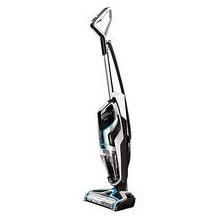
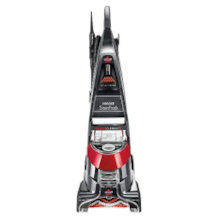
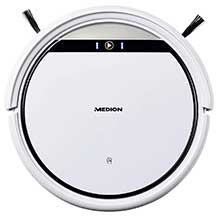
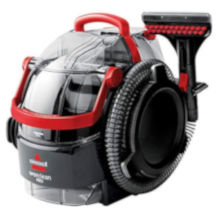
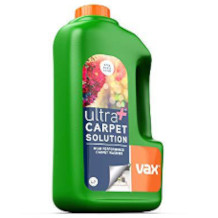
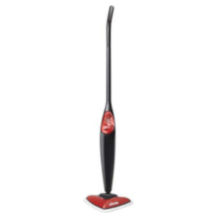
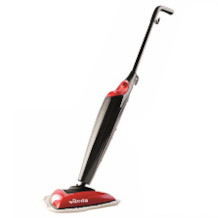

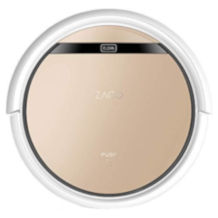
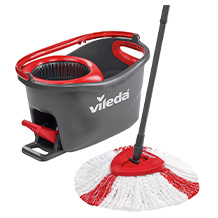
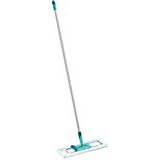
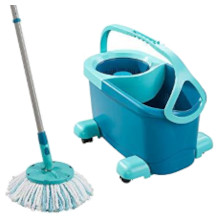
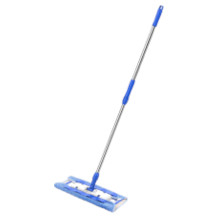
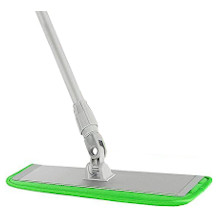
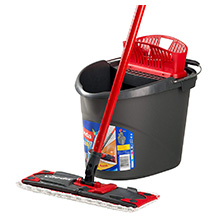
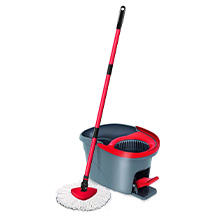
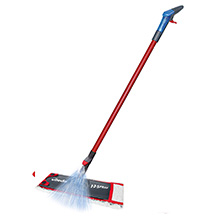
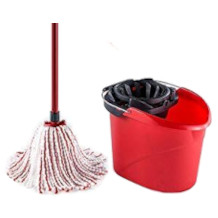

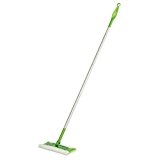
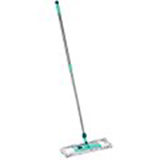

 2,885 reviews
2,885 reviews

